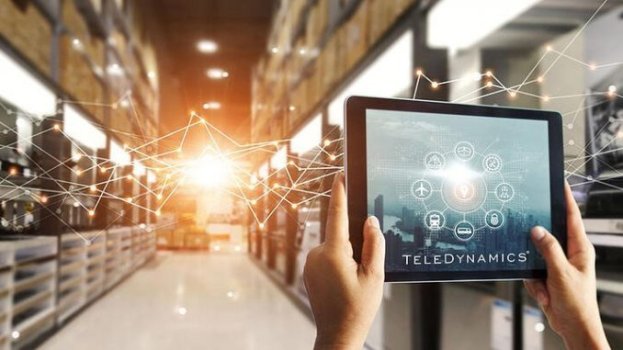K
Kathleen Martin
Guest
A while back we took a look at IoT as an emerging trend and concept, and we saw how it related to VoIP technologies. That was almost four years ago, which is an eternity when it comes to the rate at which technological trends in telecommunications evolve. Many of the fundamentals are still valid, but given the explosive growth in IoT, .we thought it time for an update on some of the more recent developments in the field.
The birth of IoT
We provided an overview of IoT and how it works with VoIP in a previous article. So, where did this all start? It depends on whom you ask. The concept of a network of smart devices was discussed as early as 1982. However, many experts will agree with Cisco that the actual birth of IoT was the point in time when more “things” were connected to the internet than people. This is estimated to be sometime between 2008 and 2009.
Why it’s called Internet of Things
When the internet was initially conceived, and as it grew, it was primarily an internet of computers. As new network-aware applications and gadgets emerged, such as cameras, mobile phones, tablets, and IP phones, the internet became an internet of devices. In recent years, the actual objects being connected to the internet have become extremely diverse, from thermostats, cars and pacemakers, to municipal lighting, refrigerators, marine buoys…and the list goes on. There really is no category broad enough to encompass all of these types of objects. That’s why the word “things” was used, to include every possible…well, thing.
So, the Internet of Things is just that: an internetwork of connected things or network-aware objects that can collect data, communicate with other things, are connected to a central control system, and can respond to incoming information, as well.
Technological advancement
Arguably the most significant trend of IoT over the past couple of years is the explosive increase in the number of connected and controlled devices. According to some analysts, in 2021 alone there was an estimated 9% increase in the number of IoT devices worldwide (not connected devices in general, but specifically IoT devices), bringing the estimated total to over 12.3 billion connected things. The same source suggests that that number will grow by 22% annually between now and 2025, resulting in close to 27.1 billion connected things by 2025.
One of the major advantages of IoT is the fact that it creates opportunities for a more direct integration of the physical world into computer-based systems, which results in improvements in efficiency, as well as economic benefits in many areas. As a result, this magnitude of increase is simply phenomenal and is probably the one major aspect that is driving IoT forward. The more connected devices, the more opportunities for integration of the physical world, the more efficiency and economy can be achieved.
Continue reading: https://telecomreseller.com/2022/02/09/voip-and-iot-a-marriage-of-innovation/
The birth of IoT
We provided an overview of IoT and how it works with VoIP in a previous article. So, where did this all start? It depends on whom you ask. The concept of a network of smart devices was discussed as early as 1982. However, many experts will agree with Cisco that the actual birth of IoT was the point in time when more “things” were connected to the internet than people. This is estimated to be sometime between 2008 and 2009.
Why it’s called Internet of Things
When the internet was initially conceived, and as it grew, it was primarily an internet of computers. As new network-aware applications and gadgets emerged, such as cameras, mobile phones, tablets, and IP phones, the internet became an internet of devices. In recent years, the actual objects being connected to the internet have become extremely diverse, from thermostats, cars and pacemakers, to municipal lighting, refrigerators, marine buoys…and the list goes on. There really is no category broad enough to encompass all of these types of objects. That’s why the word “things” was used, to include every possible…well, thing.
So, the Internet of Things is just that: an internetwork of connected things or network-aware objects that can collect data, communicate with other things, are connected to a central control system, and can respond to incoming information, as well.
Technological advancement
Arguably the most significant trend of IoT over the past couple of years is the explosive increase in the number of connected and controlled devices. According to some analysts, in 2021 alone there was an estimated 9% increase in the number of IoT devices worldwide (not connected devices in general, but specifically IoT devices), bringing the estimated total to over 12.3 billion connected things. The same source suggests that that number will grow by 22% annually between now and 2025, resulting in close to 27.1 billion connected things by 2025.
One of the major advantages of IoT is the fact that it creates opportunities for a more direct integration of the physical world into computer-based systems, which results in improvements in efficiency, as well as economic benefits in many areas. As a result, this magnitude of increase is simply phenomenal and is probably the one major aspect that is driving IoT forward. The more connected devices, the more opportunities for integration of the physical world, the more efficiency and economy can be achieved.
Continue reading: https://telecomreseller.com/2022/02/09/voip-and-iot-a-marriage-of-innovation/

